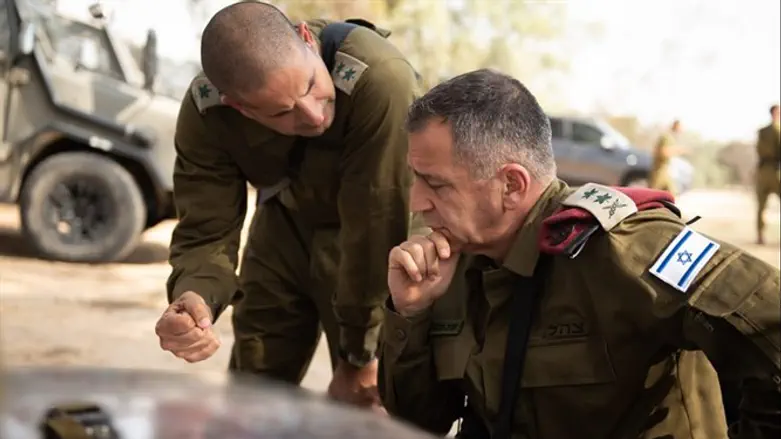
IDF Chief of Staff Major General Aviv Kochavi received the findings of the investigations carried out following Operation Black Belt, during which senior Islamic Jihad leader Baha Abu al-Atta and 25 other terrorists were eliminated.
In light of the findings of the investigations, the Chief of Staff published a series of guidelines in the field of power building and operation. The Chief of Staff praised the professional and poignant questioning exhibited in the IDF investigation that analyzes successes and mistakes and expresses a commitment to learning and improvement.
The investigation pertains to the conflict which occurred on November 12 and 13, 2019, the two days of battle following the assassination of Baha' Abu al-Atta, a senior Islamic Jihad official. The focus of the investigation was the preparation process, the defense programs, the intelligence, the offensive operation and the home front effort.
The program was based on a commando battle procedure and high quality command that included learning and learning lessons from the last days of the battle in the Gaza Strip.
The central conclusion of the investigation is that Operation Black Belt achieved its objectives - creating conditions to improve the reality in the Gaza Strip, through the elimination of Baha 'Abu al-Atta, severe damage to Islamic Jihad terrorists and its military infrastructure, and reducing Israeli civilian casualties.
In both days of the battle, about 25 terrorists who were involved in the execution of terrorist activities in the form of rocket fire and more complex attacks were eliminated. In addition, 100 infrastructure targets belonging to Islamic Jihad, including weapon production sites and military posts, were attacked. As a result of this operation, which was based on complex and intensive intelligence preparation processes undertaken in recent months, significant damage was done to Islamic Jihad.
With regard to the offensive operation, the investigation revealed that high-quality command and division processes were carried out to improve the effectiveness of the attack cells.
In terms of defense, air defense fighters intercepted the vast majority of rockets fired at Israeli residents at a success rate of about 90%. At the same time, defense efforts led by the Gaza Division prevented complex attacks in the fence area.
As part of the investigations, an attack in which eight uninvolved civilians were killed was also examined. The investigation shows that the target was identified as a military compound by the Islamic Jihad which carries out military activity. The core of the investigation dealt with actions that could bring information about civilian activity in the compound, in addition to the military activity that was carried out there.
The investigation indicates that the target was discriminated against by the gathering and research activities, as a military compound of the Islamic Jihad and carried out military activity in the past as well as during the Black Belt battle days. The investigation also shows that when planning and carrying out the attack, the IDF estimated that civilians would not be harmed as a result. It was also found that the target was intelligence-approved in the Southern Command last June in accordance with the relevant IDF intelligence officer, and then, in accordance with the process used by the IDF. L, has been attacked several times, the last of which is several days before its attack.
In the investigation, it became clear that the compound being attacked did carry out military activity, but it was not a closed compound and in fact also found civilians. In the summary of the investigation, a number of recommendations were made to minimize the possibility that such exceptional events would be repeated.
IDF fire during the operation was accurate and throughout the fighting days great efforts were made to reduce the involvement of the uninvolved, while the terrorist organization fighting the IDF exploited the civilian population by closely assimilating its military assets and deliberately operating a civilian environment.
The chief of staff concluded that the days of the battle had achieved their goal, removed an immediate threat to the residents of the State of Israel, and created better conditions for the IDF in the Gaza Strip. "The lessons learned from the qualitative inquiry are the basis for continued improvement in preparedness for the IDF's war in general and the Southern Command in particular," the IDF spokesman said.